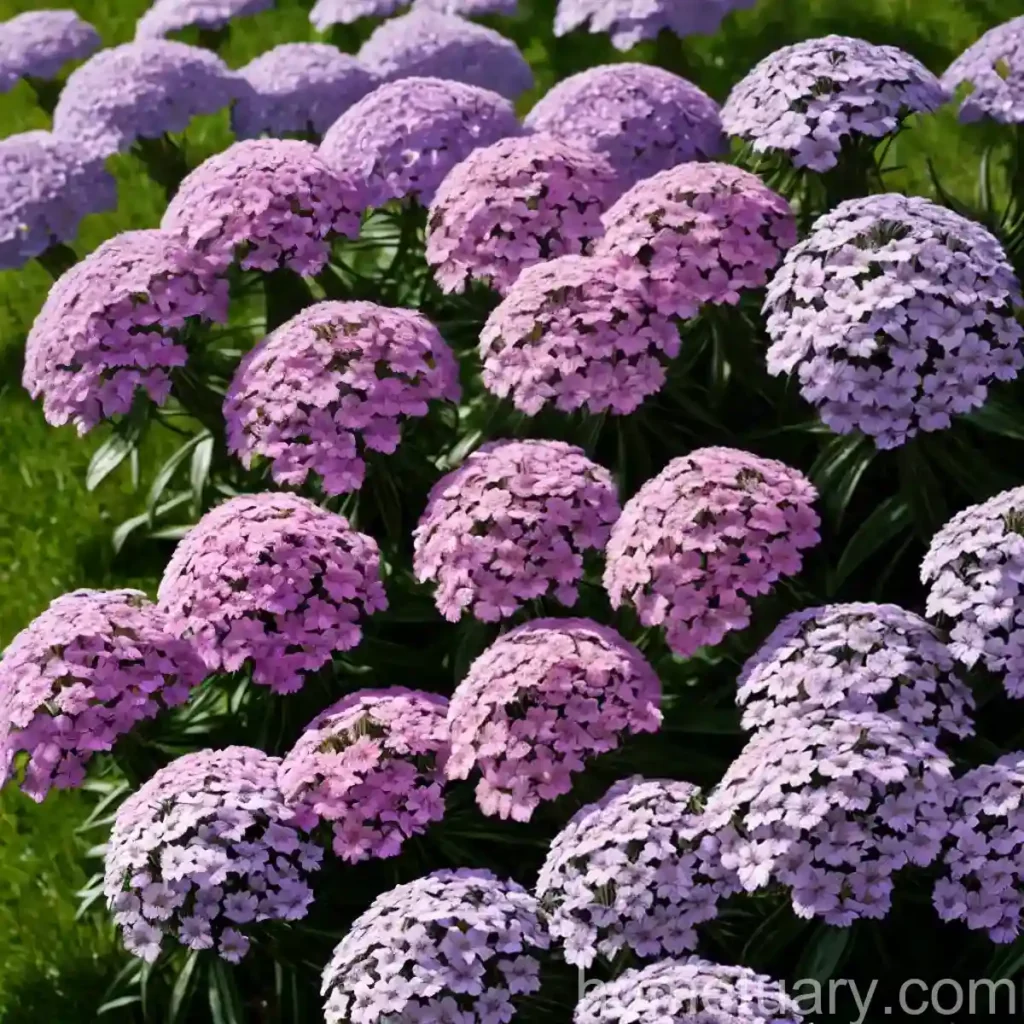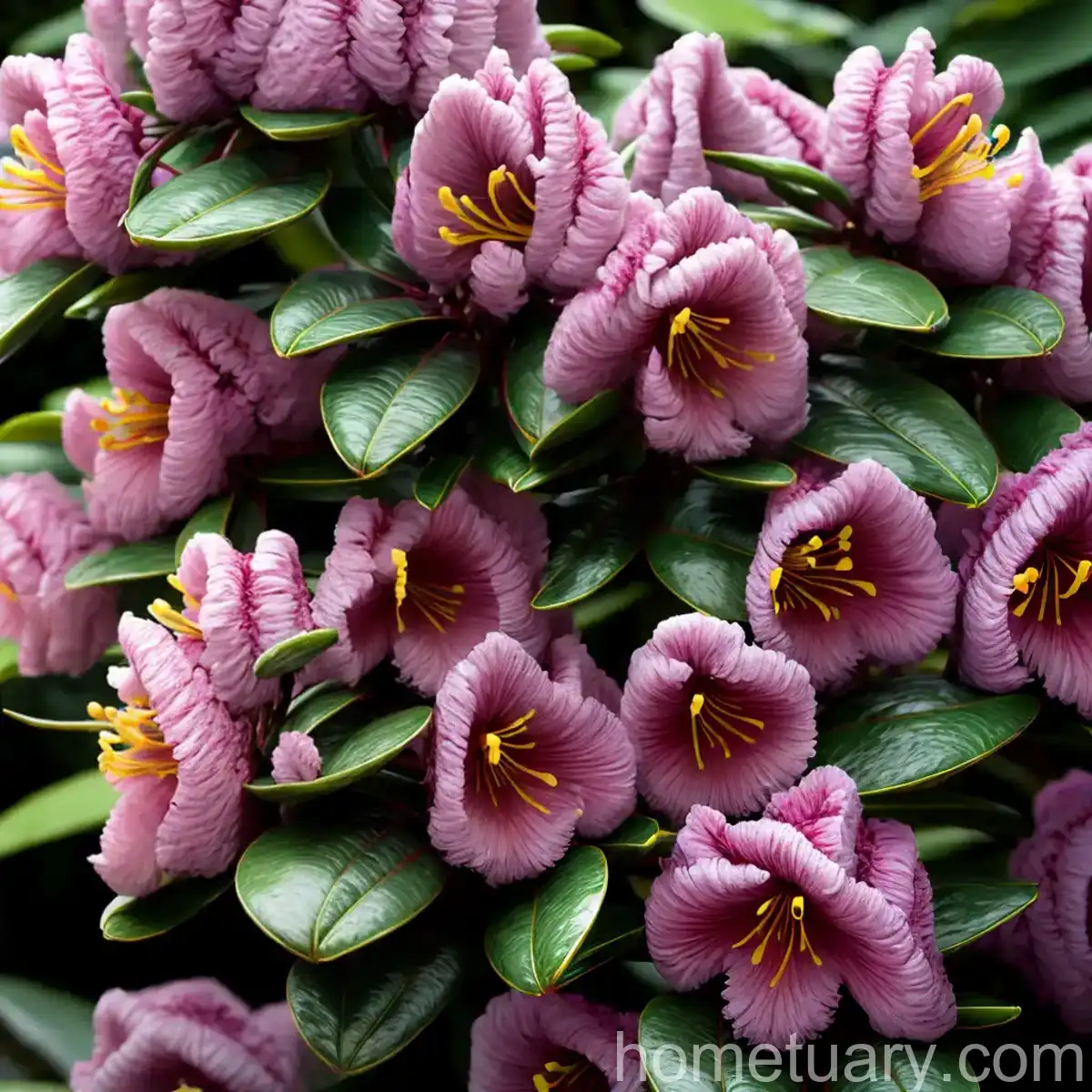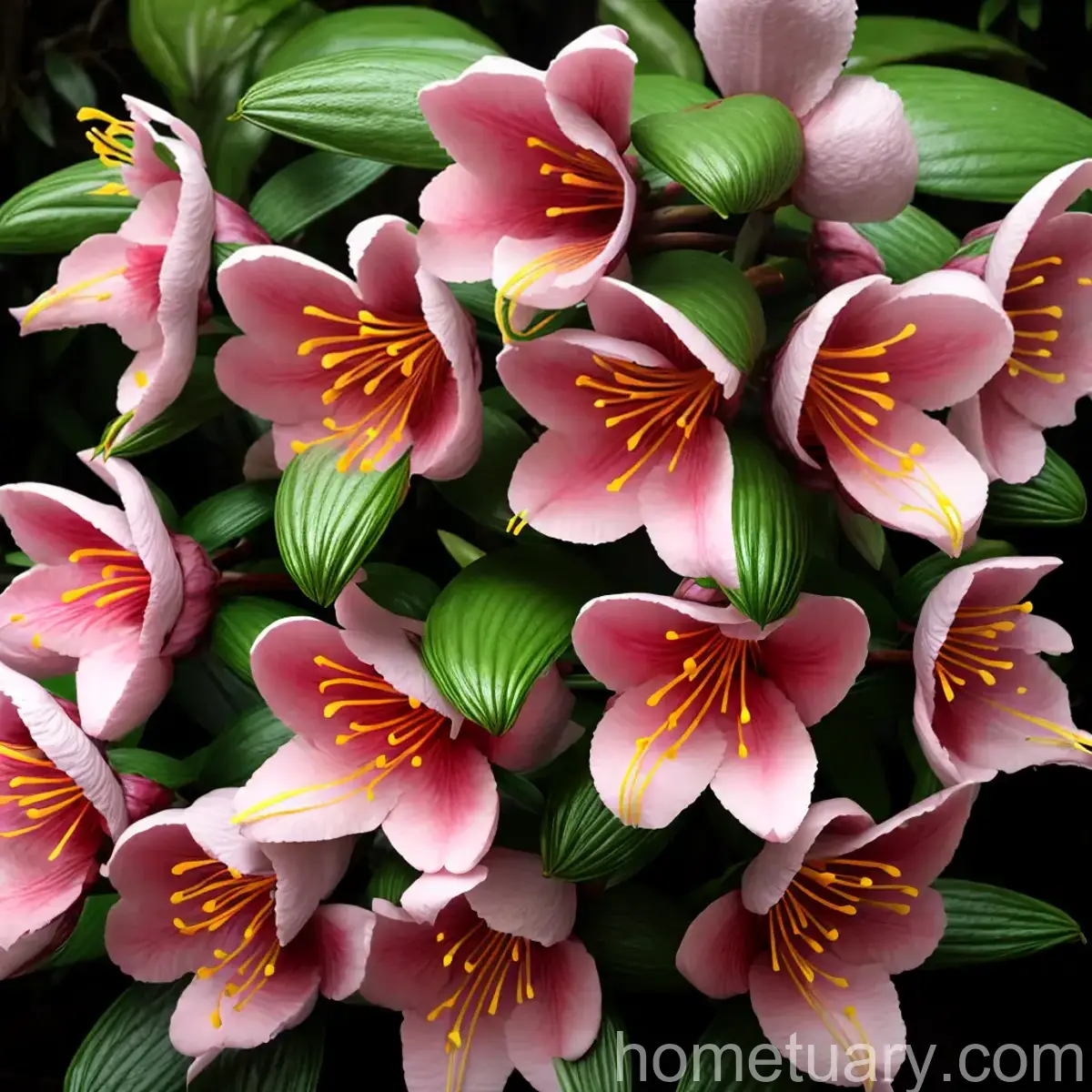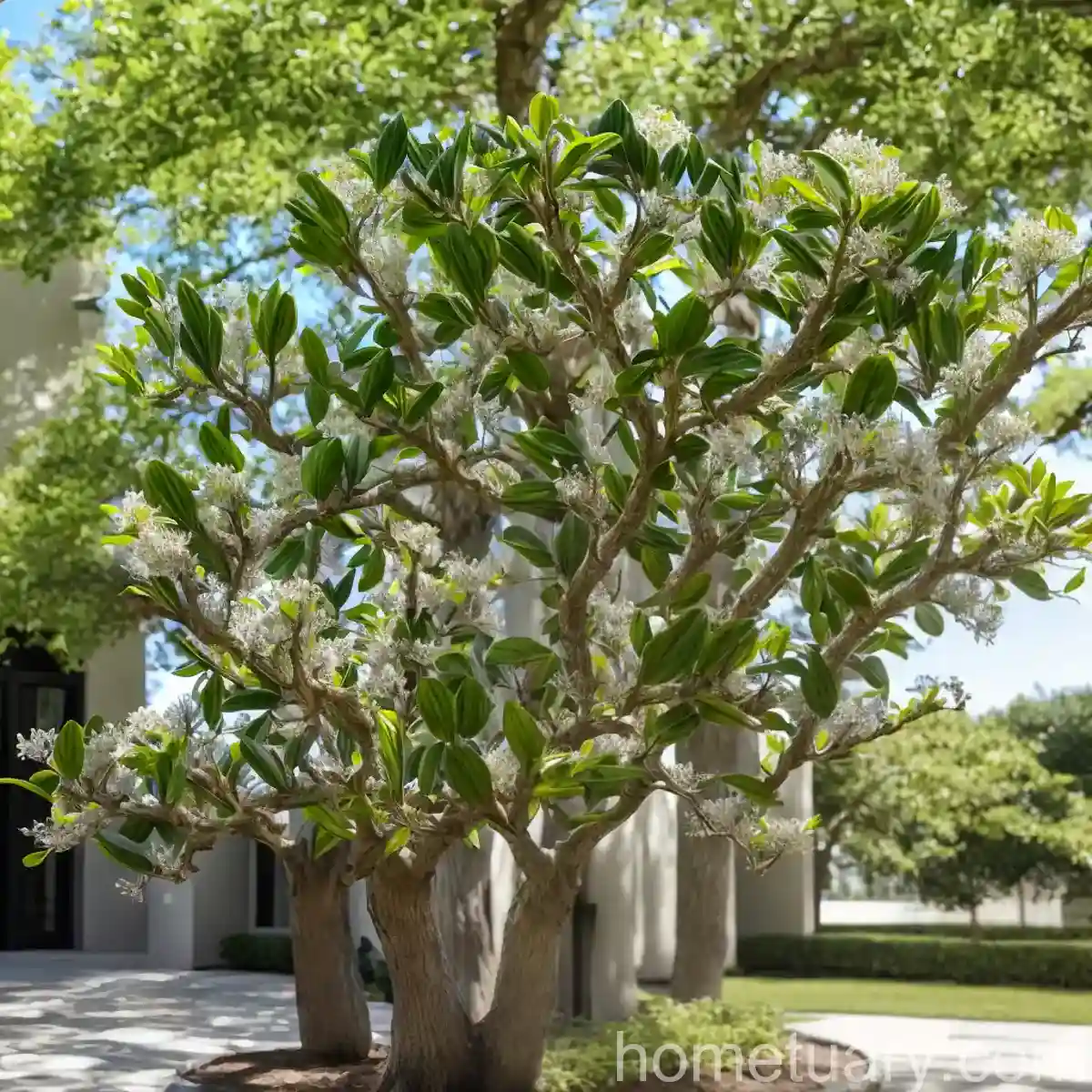All About Wild Sweet William (Phlox divaricata)
Introduction
Plants are integral to the ecosystem, contributing to the beauty and balance of nature. They come in various shapes, sizes, and types, each with its own unique characteristics. In this extensive guide, we will delve into the world of Wild Sweet William (Phlox divaricata), exploring its culture, uses, growing conditions, maintenance, and much more to help all plant enthusiasts cultivate and appreciate this charming wildflower.
What is the Wild Sweet William (Phlox divaricata)?
Wild Sweet William, scientifically known as Phlox divaricata, is a delightful, low-growing perennial that is native to the woodlands and rocky slopes of Eastern North America. It belongs to the Polemoniaceae family and is admired for its clusters of fragrant, lavender-blue or white flowers that bloom in spring, bringing a pop of color to shaded gardens. The plant’s name was inspired by its sweet aroma and the clustered growth pattern, reminiscent of its close relative, the garden Phlox (Phlox paniculata). Additionally, it has several captivating common names, including Wild Blue Phlox, Louisiana Sweet William, and Woodland Phlox.
Key Takeaways – Wild Sweet William (Phlox divaricata)
Culture
- Perennial; returns each year from the same roots
- Grows in a low, spreading fashion
Uses
- Ideal for woodland gardens or shaded areas
- Attracts butterflies and other pollinators
Water
- Requires evenly moist soil
- Be cautious of overwatering, as it may lead to root rot
Sunlight
- Thrives in partial to full shade; dappled sunlight is favorable
Fertilizer
- Requires low to moderate fertilization
Soil
- Flourishes in well-draining, humus-rich soil
Pruning
- May need occasional deadheading to encourage new blooms
Propagation
- Easily propagated by division in early spring or fall
Container Popularity
- Suitable for container gardening
- Ideal for hanging baskets and shallow pots
Common Diseases
- Susceptible to powdery mildew and root rot
- Proper plant spacing and conducive drainage can help prevent diseases
Common Pests
- Potentially affected by spider mites, aphids, and leafhoppers
Botanist’s Tips
- Mulching around the plant can help maintain moisture and reduce weeds
- Ideal companion plants include ferns, hostas, and other woodland species
Wild Sweet William (Phlox divaricata) – Cultivation and Care
Water
Wild Sweet William prefers moist, but well-drained soil. It does not tolerate standing water and is susceptible to root rot if overwatered. To maintain optimal soil moisture levels, water the plant regularly, especially during dry periods. Avoid watering the foliage, as this can contribute to the development of fungal diseases. Mulching around the plant can help in retaining moisture and suppressing weed growth.
Sunlight
This woodland beauty thrives in partial to full shade, making it an excellent choice for shaded or woodland gardens. Sufficient sunlight is crucial for healthy growth and blooming, so ensure the plant receives dappled sunlight or partial shade. However, it’s important to shield it from the harsh, direct midday sun, as this can scorch the delicate foliage.
Fertilizer
When it comes to fertilization, Wild Sweet William has low to moderate requirements. It is advisable to fertilize the plant in early spring using a balanced, slow-release fertilizer to support healthy growth and abundant blooms. An organic, all-purpose fertilizer can also be beneficial for the plant’s overall vigor and flowering performance.
Soil
The ideal soil for Wild Sweet William is rich in organic matter and well-draining. It flourishes in slightly acidic to neutral soil with a pH range between 6.0 and 7.0. Amending the soil with compost or well-rotted manure before planting can enhance its fertility and texture, providing a conducive environment for the plant to thrive.
Pruning
Pruning is an essential aspect of maintaining the health and appearance of Wild Sweet William. Deadheading, the removal of spent blooms, is recommended to encourage continuous flowering and prevent the formation of seeds. Additionally, periodic pruning can help in controlling the plant’s size and shape, ensuring it remains neat and compact.
Propagation
Wild Sweet William can be easily propagated through division, making it a great candidate for increasing your plant collection or sharing it with fellow gardeners. Division can be carried out in early spring or fall by carefully separating the plant’s roots and replanting them in suitable locations. This method not only facilitates propagation but also revitalizes the plant by stimulating new growth.
Container Popularity
While Wild Sweet William thrives in garden beds or naturalized settings, it is also well-suited for container gardening. Its low-growing and spreading habit makes it an attractive option for hanging baskets, shallow pots, or containers positioned along shaded pathways. When cultivating in containers, ensure proper drainage and use a high-quality potting mix to provide the necessary support and nutrients for the plant’s growth.
Wild Sweet William (Phlox divaricata) – Common Issues and Maintenance
Common Diseases
Wild Sweet William is vulnerable to certain diseases, with powdery mildew and root rot being the most common concerns. Powdery mildew manifests as a white, powdery coating on the foliage and can be mitigated through prevention measures such as improving air circulation and avoiding overhead watering. Root rot, on the other hand, is typically caused by excessively moist conditions and can be prevented by ensuring well-draining soil and avoiding waterlogged conditions.
Disease Diagnosis
Diagnosing and addressing plant diseases promptly are essential for preserving the health and vitality of Wild Sweet William. Regular inspection of the foliage for any signs of discoloration, wilting, or abnormal growth can aid in detecting potential issues at an early stage. It’s crucial to take proactive measures upon identifying symptoms to prevent the spread of diseases and protect nearby plants from infection.
Common Pests
In addition to diseases, Wild Sweet William may encounter certain pests that can compromise its well-being. Spider mites, aphids, and leafhoppers are among the potential invaders that may target the plant. Keeping a watchful eye on the foliage for any signs of pest activity, such as stippling, webbing, or distorted growth, enables early intervention through suitable control methods, including insecticidal soap or neem oil.
Botanist’s Tips
Mulching around Wild Sweet William can serve multiple purposes, including conserving moisture, regulating soil temperature, and inhibiting weed growth. Organic mulch such as shredded leaves or bark can be an effective option for enhancing the soil structure and supporting the plant’s overall health. Moreover, selecting suitable companion plants, such as ferns, hostas, and other shade-loving species, can create a harmonious and visually appealing woodland garden setting.
Wild Sweet William (Phlox divaricata) – Botanical Insights and Fun Facts
Fun Facts
-
The genus name “Phlox” is derived from the Greek word “phlox,” meaning flame, alluding to the vibrant and fiery hues of many Phlox species.
-
Wild Sweet William is a valuable source of nectar for butterflies, attracting these graceful pollinators to the garden with its fragrant blooms.
-
The delicate, star-shaped flowers of Wild Sweet William exude a sweet, pleasant fragrance, adding an enchanting allure to outdoor spaces.
-
This versatile perennial is well-suited for naturalizing, effortlessly spreading and establishing itself in woodland or shaded areas, creating captivating displays over time.
Links to External Resources
For further information on Wild Sweet William (Phlox divaricata), its cultivation, and related topics, the following resources are valuable references:
In conclusion, Wild Sweet William (Phlox divaricata) epitomizes the enchanting beauty and resilience of native woodland plants. Its delightful blooms, adaptability to shaded environments, and low-maintenance care requirements make it a cherished addition to gardens and natural landscapes. Whether cascading gracefully in a hanging basket or carpeting the forest floor with its enchanting blossoms, this perennial wildflower continues to captivate plant enthusiasts and contribute to the allure of woodland ecosystems. By incorporating the insights and recommendations outlined in this comprehensive guide, enthusiasts can foster thriving populations of Wild Sweet William and foster a deeper appreciation for its natural charm.
Remember, the key to successful cultivation lies in understanding the specific needs of each plant, and Wild Sweet William is no exception. With the right balance of attention, care, and appreciation for its unique attributes, this captivating wildflower can grace your garden with its timeless elegance for years to come.















